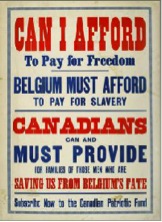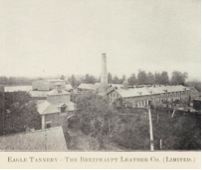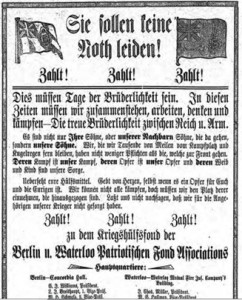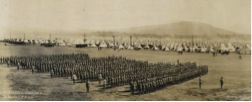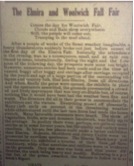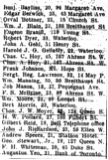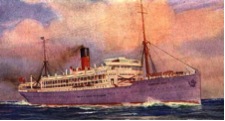Berlin officially set its first Patriotic Fund goal on the 5th of October. They persuaded the city’s residents to donate by reminding them of “British chivalry and humanity” along with their commitment to those who had already volunteered. The first goal Berlin set was to reach $75,000 by October 8th. This was the first step towards the city’s significant monetary commitment to the war effort. Berlin would contribute a significant portion to the roughly $22,981,616 that was collected across Canada by the end of the war.
(Photo courtesy of the Canadian War Museum. Patriotic Fund stat from Statistics Canada, “The Patriotic Fund Campaign,“ Berlin Daily Telegraph, 5 October 1914)
